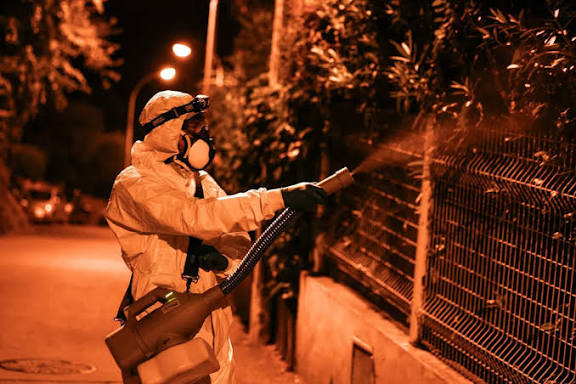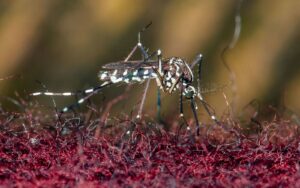Chikungunya symptoms and treatment: First locally acquired case of virus in New York,vaccine

The most prominent symptoms are fever and joint pain, which usually begin three to seven days after a person becomes infected. Today we will discuss about Chikungunya symptoms and treatment: First locally acquired case of virus in New York,vaccine
Chikungunya symptoms and treatment: First locally acquired case of virus in New York,vaccine
Chikungunya is a mosquito-borne viral disease that has caused outbreaks across tropical and subtropical regions for decades. In 2025, New York reported its first locally acquired case of chikungunya — a historic event signaling how climate change, increased travel, and the spread of mosquito species are expanding the global reach of infectious diseases once confined to warmer regions.
This article explores chikungunya’s symptoms, diagnosis, treatment, prevention, and the current vaccine landscape, while analyzing what the first New York case means for public health.
What Is Chikungunya?

The Virus and Its Transmission
Chikungunya virus (CHIKV) is an RNA virus belonging to the Alphavirus genus in the Togaviridae family. The term “chikungunya” comes from the Makonde language, meaning “that which bends up,” describing the stooped posture of patients due to severe joint pain.
The virus spreads through the bites of infected female Aedes aegypti and Aedes albopictus mosquitoes. These mosquitoes are also responsible for spreading dengue and Zika viruses. When an infected person has the virus circulating in their blood, a mosquito that bites them can pick up the virus and later infect another person.
Importantly, chikungunya does not spread directly from person to person. The disease cycle depends entirely on mosquito bites.
Global Spread and the First Local Case in New York
First identified in Africa in the 1950s, chikungunya has since spread widely in Asia, Europe, and the Americas. More than 110 countries have now reported cases or are at risk of outbreaks.
In the United States, most chikungunya infections historically came from travelers returning from endemic areas. The first locally transmitted cases were recorded in Florida in 2014.
However, in 2025, health officials in New York confirmed the first locally acquired chikungunya infection. The patient, living in Nassau County on Long Island, developed symptoms in August and had no recent travel history outside the U.S. Mosquito surveillance did not show widespread virus presence, suggesting that this was an isolated case, not an ongoing outbreak.
The case is significant because it demonstrates that even temperate climates like New York’s can now support conditions for mosquito-borne infections. Climate change, warmer summers, and the increasing range of Aedes albopictus (the Asian tiger mosquito) are contributing factors.
Incubation Period and Symptoms
Incubation Period
The incubation period — the time between a mosquito bite and symptom onset — is usually 3 to 7 days, though it can range from 2 to 12 days.
Common Symptoms
Chikungunya begins suddenly with:
-
High fever (often above 102°F or 39°C)
-
Severe joint pain (arthralgia), especially in wrists, ankles, knees, and fingers
-
Joint swelling and stiffness
-
Muscle pain
-
Headache
-
Rash (flat or raised red spots on the body)
-
Fatigue and weakness
-
Nausea or mild vomiting
-
Eye redness or conjunctivitis in some cases
These symptoms often resemble those of dengue and Zika, which can make clinical diagnosis difficult without laboratory testing.
Duration and Complications
Most patients recover within one to two weeks. However, joint pain can persist for weeks or even months, a condition known as “post-chikungunya chronic arthropathy.”
Severe or atypical complications are uncommon but can include:
-
Neurological problems such as meningitis or Guillain-Barré syndrome
-
Heart inflammation (myocarditis)
-
Eye inflammation (uveitis or retinitis)
-
Liver or kidney issues
-
Rarely, death — mainly in infants, the elderly, or those with chronic conditions such as diabetes or hypertension
Once a person recovers, they usually develop long-term immunity and are unlikely to be infected again.
Diagnosis
Because chikungunya shares symptoms with dengue and Zika, laboratory testing is crucial for confirmation.
Diagnostic Tests
-
RT-PCR Test – Detects viral RNA in the blood, best done within the first week of illness.
-
Serological Tests (IgM and IgG) – Detect antibodies that appear after several days of infection.
-
Multiplex Assays – Can test for multiple mosquito-borne viruses simultaneously.
Doctors also consider the patient’s travel history, timing of symptom onset, and whether chikungunya is circulating locally.
In the New York case, the patient’s lack of travel abroad strongly indicated local mosquito transmission.
Treatment and Management
There is no specific antiviral medication for chikungunya. Treatment focuses on relieving symptoms and supporting recovery.
1. Rest and Hydration
Adequate rest and fluid intake are vital to prevent dehydration and help the body recover.
2. Pain and Fever Relief
-
Acetaminophen (paracetamol) is recommended for fever and pain, especially before dengue is ruled out.
-
NSAIDs (such as ibuprofen or naproxen) can be used once dengue is excluded, as they may worsen bleeding in dengue cases.
-
Aspirin should generally be avoided unless prescribed.
3. Managing Joint Pain
-
Gentle movement and physiotherapy help maintain joint flexibility.
-
Topical pain creams or corticosteroid gels can reduce localized inflammation.
-
Persistent pain may require rheumatology consultation and long-term management.
4. Monitoring Complications
Patients showing severe symptoms — neurological issues, heart problems, or organ dysfunction — may need hospitalization and specialist care.
5. Preventing Further Spread
During the first week of illness, infected individuals should avoid mosquito exposure to prevent mosquitoes from biting them and transmitting the virus to others. Using repellents, window screens, and bed nets helps break the transmission cycle.
Prognosis
Most people fully recover, and mortality is rare. However, long-lasting joint pain can affect quality of life, especially in older adults.
Vaccine Development and Current Status
For many years, chikungunya prevention relied solely on mosquito control, as no vaccine was available. However, in recent years, scientific progress has led to promising developments.
Types of Vaccines in Development
-
Live-attenuated virus vaccines – Weakened versions of the virus that stimulate immunity.
-
Virus-like particle (VLP) vaccines – Use non-infectious particles resembling the virus to trigger immune response.
-
Inactivated vaccines – Contain killed virus particles.
-
mRNA and DNA vaccines – Newer platforms designed for faster, targeted immune protection.
Approved Vaccines and Challenges
Some countries have approved chikungunya vaccines, including Ixchiq, a live-attenuated vaccine. However, regulatory authorities have temporarily suspended its license due to safety concerns such as rare neurological side effects.
Another vaccine based on VLP technology is available in certain regions for people aged 12 and above. It has shown good safety and effectiveness in trials.
Despite these advancements, no chikungunya vaccine is yet widely available. Challenges include:
-
Limited global supply and distribution
-
High production costs
-
Ongoing safety evaluations
-
Unclear duration of immunity
Until a reliable, globally accessible vaccine is distributed, vector control and personal protection remain the main defenses against chikungunya.
Prevention: Protecting Yourself and the Community
Since mosquitoes are the only carriers of chikungunya, prevention revolves around reducing mosquito exposure and eliminating breeding sites.
Personal Protection Tips
-
Use mosquito repellents containing DEET, picaridin, or oil of lemon eucalyptus.
-
Wear long sleeves and pants, especially during daylight hours when Aedes mosquitoes are most active.
-
Treat clothing and bed nets with permethrin when possible.
-
Sleep in air-conditioned or screened rooms to keep mosquitoes out.
-
Use bed nets if sleeping in areas with mosquito activity.
Community and Environmental Control
-
Eliminate standing water from containers, flowerpots, gutters, and discarded tires.
-
Clean water tanks and buckets weekly to prevent mosquito larvae from hatching.
-
Cover all water storage containers tightly.
-
Use larvicides or introduce fish that eat mosquito larvae where appropriate.
-
Participate in community cleanup drives to destroy breeding sites.
Travel Precautions
Travelers to regions where chikungunya is common should be extra cautious. Upon returning, they should protect themselves from mosquito bites for at least a week, especially if they develop fever or rash, to prevent local spread.
Significance of the New York Case
The confirmation of New York’s first locally acquired chikungunya case marks a pivotal moment in U.S. public health. While there is no sign of an outbreak, the case serves as a warning about changing disease patterns.
Key Implications
-
Climate and Mosquito Range Expansion
Warmer temperatures allow Aedes albopictus mosquitoes to survive in northern regions, increasing the risk of future local cases. -
Enhanced Surveillance Needed
Health departments should monitor mosquito populations and human infections closely to detect early signs of spread. -
Low Current Risk but Ongoing Vigilance
Cooler weather limits mosquito activity in fall and winter, but risk rises during warmer months. -
Public Awareness
People must recognize that mosquito-borne diseases are no longer confined to tropical regions. -
Vaccine Readiness
As vaccines become safer and more available, health authorities should prepare rollout plans for at-risk populations.
This single New York case emphasizes that vector-borne diseases are adapting to new environments — a trend likely to continue.
Summary Table
| Aspect | Key Facts |
|---|---|
| Cause | Chikungunya virus (CHIKV), spread by Aedes mosquitoes |
| Incubation Period | 2–12 days (usually 3–7) |
| Symptoms | Fever, severe joint pain, rash, headache, fatigue |
| Treatment | Supportive care: rest, fluids, acetaminophen, NSAIDs after ruling out dengue |
| Complications | Chronic joint pain, neurological or cardiac issues (rare) |
| Vaccine Status | Limited approvals; not yet widely available |
| Prevention | Mosquito control, repellents, community hygiene |
| Recent Event | First locally acquired chikungunya case in New York (2025) |
Recommendations
-
For Individuals
-
Protect against mosquito bites using repellents and protective clothing.
-
Keep your surroundings clean and remove standing water.
-
Seek medical attention for fever and joint pain, especially after travel.
-
-
For Health Authorities
-
Expand mosquito surveillance programs in northern states.
-
Strengthen laboratory testing and disease reporting systems.
-
Educate the public about symptoms and prevention.
-
Prepare for vaccine introduction once approved for general use.
-
-
For Communities
-
Conduct awareness campaigns about mosquito control.
-
Encourage participation in local cleanup activities.
-
Support government vector control programs.
-
Conclusion
Chikungunya is a painful but preventable disease. While it is rarely fatal, it causes intense suffering and economic loss due to prolonged joint pain and missed workdays.
The first locally acquired case in New York highlights that even regions with cooler climates are not immune to tropical infections. As mosquito habitats expand, vigilance, vector control, and public education become more crucial than ever.
Though progress toward a safe and effective vaccine is encouraging, prevention remains our strongest weapon. Eliminating mosquito breeding grounds and protecting ourselves from bites can stop chikungunya from spreading further — in New York and beyond.
How useful was this post?
Click on a star to rate it!
Average rating 0 / 5. Vote count: 0
No votes so far! Be the first to rate this post.
About the Author
usa5911.com
Administrator
Hi, I’m Gurdeep Singh, a professional content writer from India with over 3 years of experience in the field. I specialize in covering U.S. politics, delivering timely and engaging content tailored specifically for an American audience. Along with my dedicated team, we track and report on all the latest political trends, news, and in-depth analysis shaping the United States today. Our goal is to provide clear, factual, and compelling content that keeps readers informed and engaged with the ever-changing political landscape.




